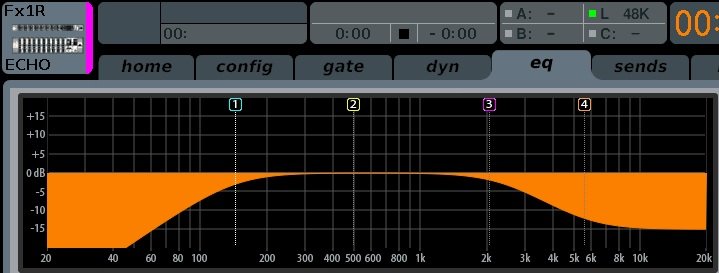News
19 May 2021
Mixing the Old with the New

Subscribe to CX E-News
Analog Echo versus Digital Delay
Recently, in a fit of nostalgia, I revamped my vintage Roland Space Echo. A new tape loop, a few other parts from Aussie company Echo Fix (www.echofix.com) and it was as good as 1980. After playing around with it and hearing how well it created a warm echo, I thought it might be cool to put it through its paces as an outboard effect at a live gig. Part of this appeal is the sound of the lo-fi tape saturation, somewhat akin to valve distortion.
Some of you might not be aware of what a tape echo is. It achieves an echo effect with record and playback heads on a magnetic tape loop. Tape speed and/or choosing different head positions vary the delay time. Repeats could be increased by feeding back signal from the play head to the record head.
Back in the 80s, when I started doing live sound, the Roland Space Echo or Chorus Echo was what you had to have in the effects rack. Produced by Roland from 1974 until 1990, they didn’t start to lose traction until Yamaha released the digital SPX90 in 1985, and even then it was a very slow decline as most of us were reluctant to get on the steep learning curve of digital effects.
I also thought it an ironic contrast to have such a vintage analog beast plugged into a highly sophisticated digital console. As luck would have it, I had some gigs booked with Painters and Dockers (1980s) and Bongo Starkie’s Million Dollar Riff (Skyhooks 1970s). It doesn’t get much more appropriate than these two bands.
But this is not just plug-n-play, there are a few challenges, number one being line level. The inputs on a space echo expect an instrument or microphone level, certainly not +4 dB. Even the dedicated “FROM P.A.” socket is rated at only -24dBm! Similarly, the output is pretty low. The level select switch ranges from -35 to -15 dB, so the return needs a mic channel, not an aux/line input. Be aware some digital consoles may not be set up with a local mic input! Also, there is some impedance mismatch too as well as unbalanced connections. However, these are small hurdles as there is usually enough room to move with various volume controls.
Getting back to the low output needing a microphone input. For me this is a very suitable circumstance as this is how I learned to mix effects in the early days. Back then channel 16 was always the echo return. Most of us would insist on echo being on a fader as it was much easier to ride up and down. Furthermore, in a dark environment, you could easily see if it was up or down. These days I always assign a group master fader as well as a mute group to my echo return.
So, next question, why bother mixing with something so old? Well, there is the aesthetic and satisfaction of something old and classic still achieving a very good result. There is also a big difference between mixing vocals with Delay or with Echo.


As an effect, in particular on vocals, delay is great. It layers and thickens the voice and can create momentary harmonies as a singer moves through a melody. BUT a clean digital delay is not a natural sounding echo. To make a delay effect work well I find I need to do quite a bit of manipulation to turn that delay into an echo. When I mix most bands, one priority is that the vocals should be clear. Not all bands though. Once I had a singer tell me “I want my vocal drowning in a sea of guitar”. What a brilliant and succinct instruction! To maintain vocal clarity my opinion is that the vocal effect should be a shadow of the original, not a clear carbon copy. One technique is to EQ out the tops and lows [see screen shot of my eq curve], another is to add a bit of reverb to the delay return making it more ambient, and therefore more echo-like. I have also used heavy compression to tone things down. Here’s another hack; a gate can make the echo all but disappear except when the singer really goes for it.

Some of the above tricks are all bundled up in the vintage Space Echo, an all-in-one low-fi enhancement for live vocals in a retro style.
Mark Barry owns and operates B S Sound PA Hire in Melbourne and is happy to go anywhere to work for anyone. He can be contacted at mark@bssound.com.au
Subscribe
Published monthly since 1991, our famous AV industry magazine is free for download or pay for print. Subscribers also receive CX News, our free weekly email with the latest industry news and jobs.









